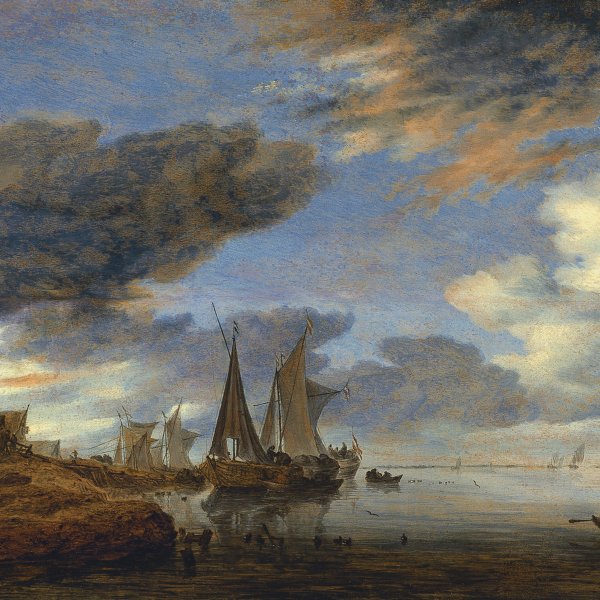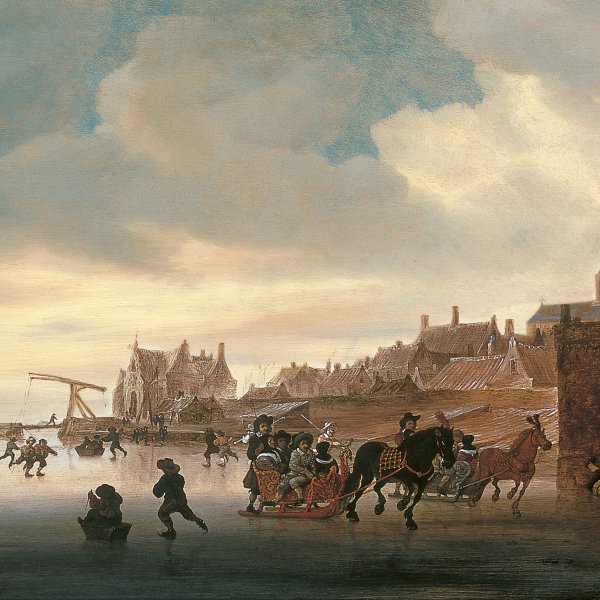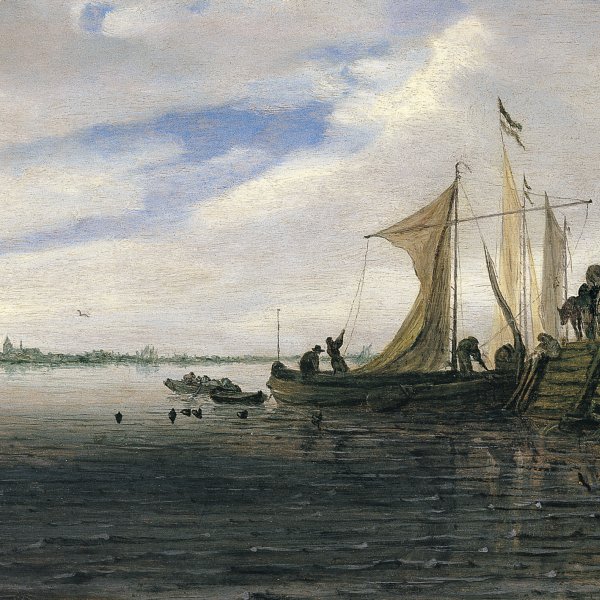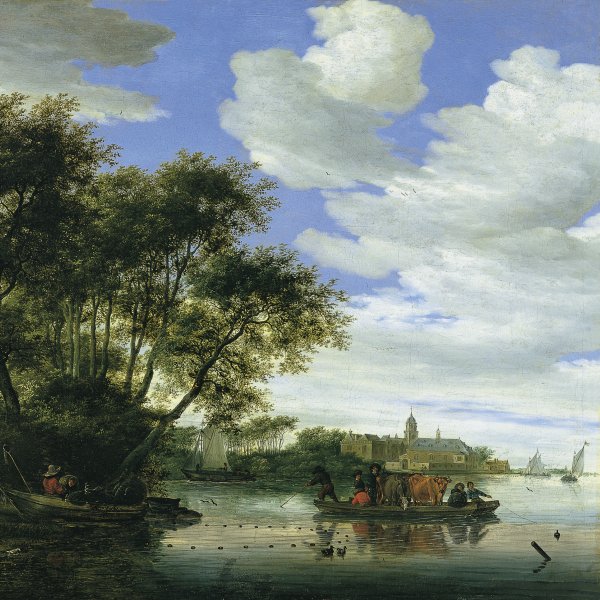View of Alkmaar
ca. 1650
Oil on panel.
36.2 x 32.5 cm
Museo Nacional Thyssen-Bornemisza, Madrid
Inv. no.
793
(1930.103
)
ROOM 23
Level 2
Permanent Collection
In the 1650s Ruysdael produced a series of small-format, vertical, marine views in which he experimented with light and atmospheric effects on large areas of water and sky. Art historians have frequently noted the influence on these works of two other Dutch painters: Jan Porcellis and Jan van Goyen. Porcellis used the vertical format for marine views that frequently depicted rough water and heavy clouds. Van Goyen had depicted marine views twenty years earlier, modifying the horizon line and enlarging the sky. Taking the work of these two painters as his starting point, Ruysdael brought new life to the marine view through his distinctive use of colour and a new mood of calm tranquillity.
In the present work the principal elements are the broad expanse of sky that occupies more than half the panel, and the water. These two large areas are broken on the right by a narrow strip of land and by the vertical lines of numerous sails of the boats on the left. The far distance is carefully rendered through graduated colours and through the boats and ships that cross the water. The scale of these vessels gradually decreases from the foreground, where a boat with numerous people on board whose hull lies parallel to the picture plane leads the eye through its sails to others. The rigging of these distant vessels gradually blends into the distant horizon. The light is filtered through the clouds, creating a broad, dark strip in the foreground that becomes brighter as the eye recedes towards the brightly lit background.
The city in the background has been identified as Alkmaar and the church on the right, whose northeast façade is visible, as that of St. Lawrence. However, when the panel was exhibited in Berlin in 1906 the city was described as Haarlem, and it was described as such in the early catalogues of the Thyssen Bornemisza collection. The correct identification was made by Stechow.
The format and subject of this panel have been related to another by the artist in a private collection entitled Sailing Boats on the open Sea, with which it might form a pair. Other known pairs by Ruysdael include two beach scenes in the Fogg Art Museum, Harvard University, and two marine views. However, the fact that Ruysdael used panels of similar dimensions that he may have acquired in groups and the fact that the horizon line in the present work and that of the one in the private collection do not coincide led Sutton to consider them independent.
Mar Borobia
In the present work the principal elements are the broad expanse of sky that occupies more than half the panel, and the water. These two large areas are broken on the right by a narrow strip of land and by the vertical lines of numerous sails of the boats on the left. The far distance is carefully rendered through graduated colours and through the boats and ships that cross the water. The scale of these vessels gradually decreases from the foreground, where a boat with numerous people on board whose hull lies parallel to the picture plane leads the eye through its sails to others. The rigging of these distant vessels gradually blends into the distant horizon. The light is filtered through the clouds, creating a broad, dark strip in the foreground that becomes brighter as the eye recedes towards the brightly lit background.
The city in the background has been identified as Alkmaar and the church on the right, whose northeast façade is visible, as that of St. Lawrence. However, when the panel was exhibited in Berlin in 1906 the city was described as Haarlem, and it was described as such in the early catalogues of the Thyssen Bornemisza collection. The correct identification was made by Stechow.
The format and subject of this panel have been related to another by the artist in a private collection entitled Sailing Boats on the open Sea, with which it might form a pair. Other known pairs by Ruysdael include two beach scenes in the Fogg Art Museum, Harvard University, and two marine views. However, the fact that Ruysdael used panels of similar dimensions that he may have acquired in groups and the fact that the horizon line in the present work and that of the one in the private collection do not coincide led Sutton to consider them independent.
Mar Borobia









